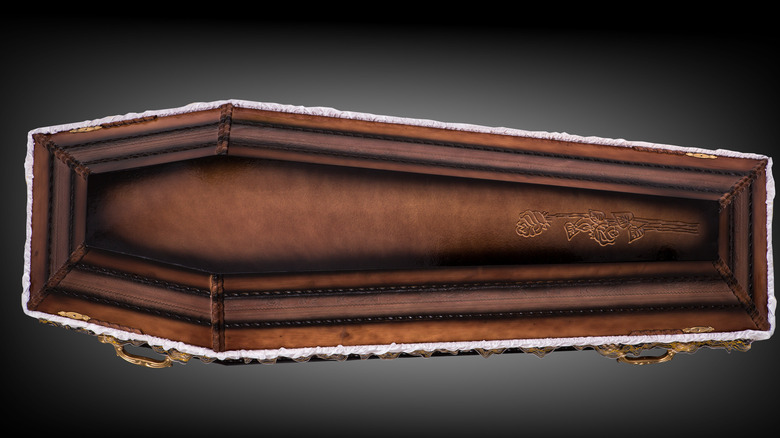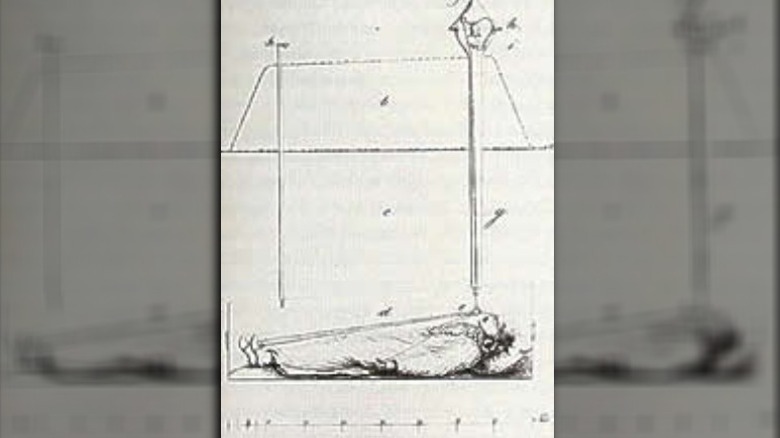This Is The Difference Between A Coffin And A Casket
Funeral directors generally need to be tactful people when their bereaved clients come to the funeral home to arrange the burials of their loved ones. It's a moment when people are at their most vulnerable, full of sadness and anxiety. So it's probably not the best time to correct them when they go on using the word coffin and casket interchangeably. It's true that both are funeral boxes, used for housing a body for a viewing or burial. But the fact is, it's really easy to tell the difference between a coffin and a casket. It all comes down to the shape of the box, as Mental Floss points out.
Today, in the United States, a coffin refers to a hexagon-shaped funeral box that is somewhat tapered to fit the human body. It's wider across the shoulders and more narrow at the feet. These days, you're more likely to see a coffin in an old horror movie than at a funeral. Caskets, on the other hand, are four-sided, generally rectangular, funerary boxes. Caskets are typically constructed of higher quality material, with more attention to detail and can often be quite ornate. With the hinged lid, mourners can say goodbye one last time and be comforted that the box wasn't shaped like a human body. Even the origin of the word is soothing — "casket" describes an ornamental box to hold jewelry or other precious keepsakes, per HowStuffWorks.
People were frequently buried alive in coffins
The move to caskets was also an indication that the mortuary sciences had dramatically improved. Throughout the 18th and 19th centuries, there was a very real and very terrifying chance of premature burial — literally being buried alive, according to Vox. Heightened during the cholera epidemics of the 19th century, scores of people had been declared dead who were actually very much alive. Instead of making sure people weren't dead before burying them, coffin makers developed the safety coffin, which was rigged with a string (pictured above) that would ring a bell to alert graveyard personnel they needed to be dug out.
A slightly more sophisticated version of the safety coffin was the escape coffin, which had a spring-loaded top that would release with any little movement within the coffin. For those who were buried in vaults, a release valve on the inside became customary, according to Gizmodo. However, the fear of being buried alive isn't a thing of the past in "coffin times." In 2010, a patent was granted by the U.S. Patent and Trademark Office for "Apparatus and Method for Generating Post-Burial Audio Communications in a Burial Casket," per Smithsonian. The system would allow for a device within a casket for communication with the buried as well as wireless programmable audio and music files, while giving "surviving family members the ability to update, revise and edit stored audio files and programming after burial."

